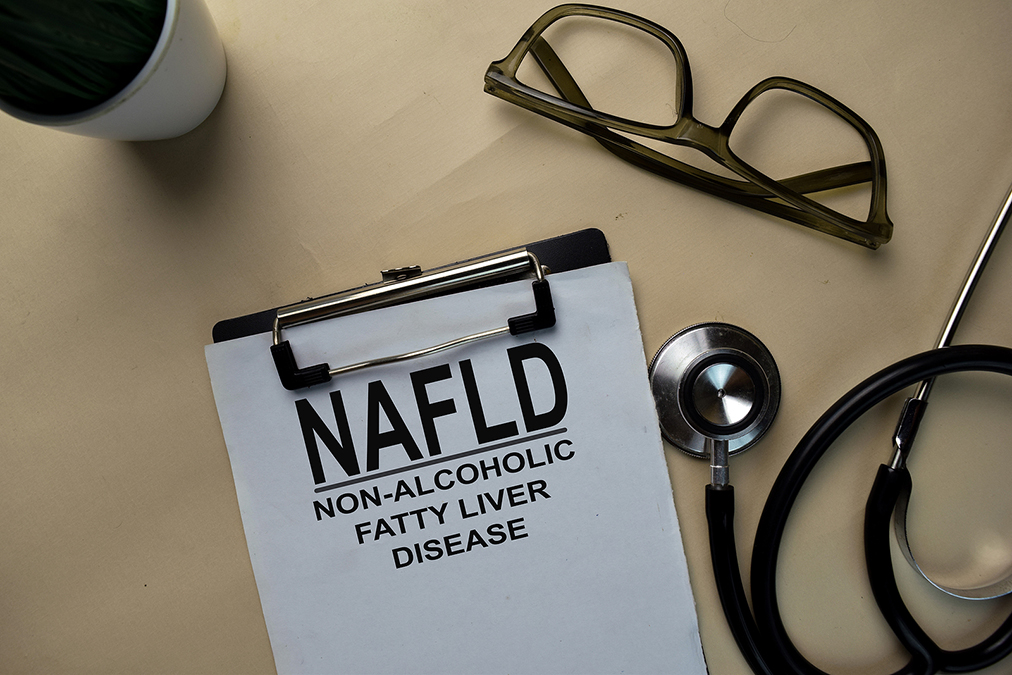 People’s preferred time to be active is known as their chronotype.
People’s preferred time to be active is known as their chronotype.
A new study in the International Journal of Obesity shows that your chronotype determines whether you will develop non-alcoholic fatty liver disease (NAFLD) and how severe it will be.
Since the risk of NAFLD is highest in obese people, the Italian researchers decided to analyze only patients with obesity.
They recruited 87 people from the Italian Centre for the Care and Well-Being of Patients with Obesity at Federico II University Hospital, 73.5% of whom were women. The participants had an average BMI score of 46.5.
The researchers gave them the Home-Ostberg morningness-eveningness questionnaire to assess their chronotype, took their body measurements, calculated their body fat percentage, and measured some biochemical data related to fat processing and liver function.
They used this information to calculate the severity of the participants’ NAFLD through the liver fat equation, hepatic steatosis index, and index of non-alcoholic steatohepatitis (NASH).
They split the participants into morning, intermediate, and evening prototypes, comprising those that prefer to be most active in the morning, the daytime, or the evening, respectively.
31% fell into the morning chronotype, 36.8% into the intermediate chronotype, and 32.2% into the evening chronotype.
Given the severity of their obesity, it is unsurprising that all of the subjects had some level of NAFLD.
The researchers found some interesting associations.
-
1. Compared to those with the morning chronotype, those with the evening chronotype had higher BMI scores and higher waist and hip circumferences.
2. Compared to those with the intermediate chronotype, those with the evening chronotype had higher BMI scores and higher waist circumferences.
3. Those with the evening chronotype had the most visceral fat surrounding their abdominal organs and the highest level of fat buildup in their livers.
4. While all of the subjects had some level of NAFLD, only those with the evening chronotype had non-alcoholic steatohepatitis, which involves inflammation in the liver and the scarring of liver tissue.
Does this mean that you should try to change your chronotype if you are currently most active in the evenings?
According to scientists, definitely not.
They assert that people who try to live outside their chronotype have unhealthier liver profiles than those who accept their chronotype and live in line with it.

 Overcoming IBD
Overcoming IBD Multiple Sclerosis
Multiple Sclerosis Banishing Bronchitis
Banishing Bronchitis Gum Disease Gone
Gum Disease Gone Overcoming Onychomycosis
Overcoming Onychomycosis Neuropathy No More
Neuropathy No More The Prostate Protocol
The Prostate Protocol Brain Booster
Brain Booster
 Ironbound
Ironbound
 Solution for Shingles
Solution for Shingles
 The Bone Density Solution
The Bone Density Solution
 The Ultimate Healing Protocol
The Ultimate Healing Protocol
 The Parkinson's Protocol
The Parkinson's Protocol
 The Chronic Kidney Disease Solution
The Chronic Kidney Disease Solution
 Overthrowing Anxiety
Overthrowing Anxiety The Fatty Liver Solution
The Fatty Liver Solution The Hypothyroidism Solution
The Hypothyroidism Solution
 The End of Gout
The End of Gout The Blood Pressure Program
The Blood Pressure Program
 The Oxigized Cholesterol Strategy
The Oxigized Cholesterol Strategy
 Stop Snoring And Sleep Apnea Program
Stop Snoring And Sleep Apnea Program
 The Arthritis Strategy
The Arthritis Strategy The Vertigo & Dizziness Program
The Vertigo & Dizziness Program The 3-Step Diabetes Strategy
The 3-Step Diabetes Strategy Hemorrhoids Healing Protocol
Hemorrhoids Healing Protocol The Erectile Dysfunction Master
The Erectile Dysfunction Master Weight Loss Breeze
Weight Loss Breeze The IBS Program
The IBS Program The Insomnia Program
The Insomnia Program The Migraine and Headache Program
The Migraine and Headache Program The Neck Pain Solution
The Neck Pain Solution The Menopause Solution
The Menopause Solution The Ejaculation Master
The Ejaculation Master The TMJ Solution
The TMJ Solution The Acid Reflux Solution
The Acid Reflux Solution The Fibromyalgia Solution
The Fibromyalgia Solution The Psoriasis Strategy
The Psoriasis Strategy